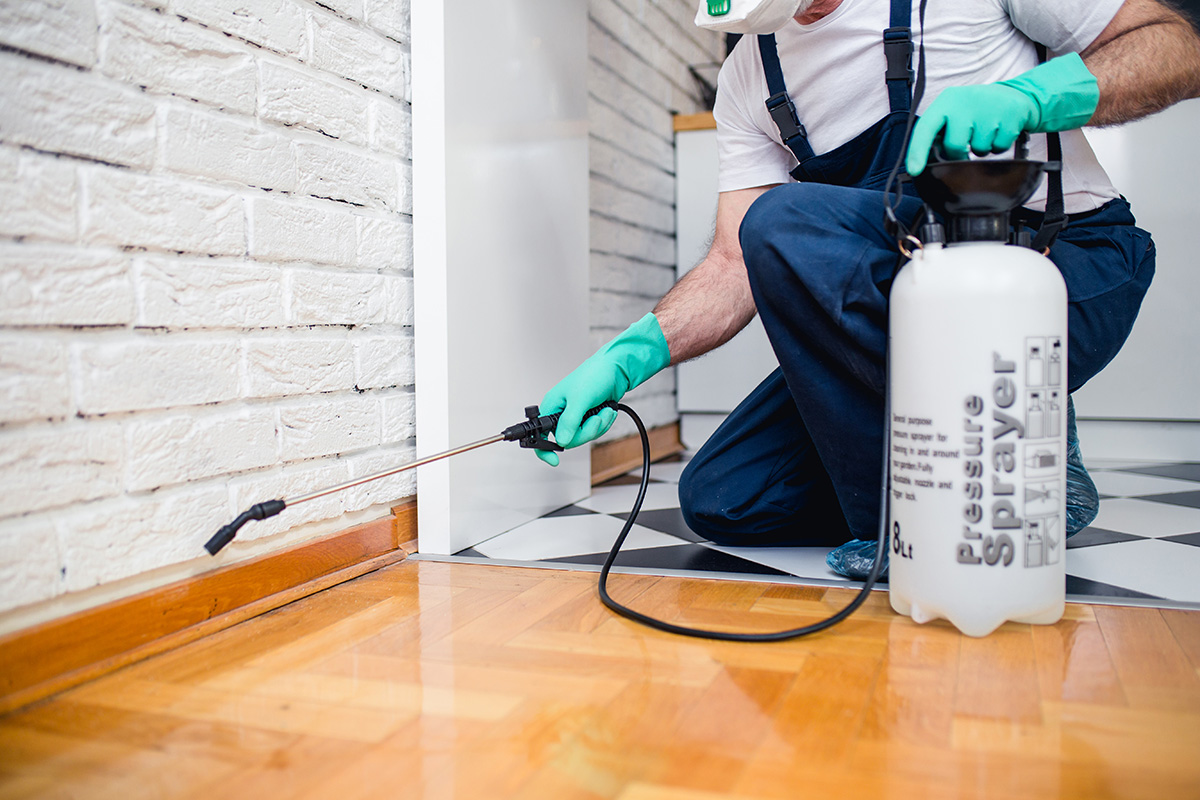Experienced A1 Exterminators Charlotte NC - Fast and Trustworthy Solutions
Experienced A1 Exterminators Charlotte NC - Fast and Trustworthy Solutions
Blog Article
Bed Bug Therapy Failure: Comparing Chemical Vs. Non-Chemical Solutions
In the realm of insect control, specifically when managing the consistent concern of bed pests, the choice between chemical and non-chemical treatment options can be a crucial one. Both strategies provide distinctive advantages and disadvantages, affecting aspects such as effectiveness, safety and security considerations, and total price. By examining the nuanced details of each technique, a clearer understanding of which path to seek in addressing a bed insect problem can be attained.
Performance of Chemical Therapies
Chemical treatments for bed bug infestations have actually been commonly identified for their powerful and quick efficacy in eliminating these bugs. When thinking about the efficiency of chemical therapies, it is important to comprehend that they can offer a quick and comprehensive service to a bed insect problem. Specialist exterminators frequently rely upon insecticides to target bed insects at numerous stages of their life cycle, consisting of eggs, grownups, and fairies. These chemicals usually function by interfering with the bed pests' nerves, bring about paralysis and ultimate fatality.
Moreover, chemical therapies have the advantage of offering recurring effects, indicating that they can remain to get rid of bed insects also after the preliminary application. This recurring action is specifically beneficial in combating any prospective re-infestations. Additionally, the quick action of chemical therapies can bring alleviation to individuals dealing with serious bed pest infestations, permitting them to gain back control of their living areas quickly.
Safety Interest In Chemical Solutions
When utilizing chemical remedies for bed pest therapy is making certain the security of occupants and the environment,One crucial element that calls for mindful factor to consider. While chemical treatments can be effective in removing bed insects, they might present risks otherwise taken care of properly. Among the key safety and security interest in chemical services is the prospective injury they can create to human wellness. Exposure to certain chemicals utilized in bed pest treatments can lead to respiratory issues, skin irritability, or various other unfavorable reactions, specifically in people with pre-existing problems or level of sensitivities. Furthermore, improper application or dose of chemical pesticides can result in hazardous residues lingering in the cured area, posing long-term health and wellness dangers to residents.
Moreover, the environmental impact of chemical services is another considerable consideration. Some pesticides made use of in bed pest treatments might be dangerous to valuable pests, wildlife, and ecosystems if they leach into the dirt or water supply. It is necessary to utilize chemical therapies sensibly, complying with safety and security standards, and considering less hazardous choices to minimize these risks and make sure the effective and secure administration of bed bug infestations.
Benefits of Non-Chemical Approaches
Thinking about the possible security issues and ecological influence related to chemical options for bed bug treatment, discovering non-chemical strategies offers an encouraging alternative with several distinct benefits. Non-chemical techniques use a much safer option for homes, particularly those with individuals, animals, or children delicate to harsh chemicals. These approaches eliminate the risks of direct exposure to toxic materials, decreasing the capacity for damaging health results. Moreover, non-chemical therapies are eco-friendly, as they do not add to air or water contamination, making them a sustainable selection for bug control.
In addition, non-chemical options can be effective in targeting bed insects, including hard-to-reach areas where chemical treatments may not permeate. Approaches such as warmth therapy, vacuuming, steam cleansing, and bed mattress encasements supply detailed elimination without using damaging chemicals. In addition, non-chemical strategies can be less turbulent, needing marginal preparation and permitting quicker reentry into dealt with areas. Overall, choosing non-chemical bed pest therapy methods not just focuses on safety and security and ecological protection however also guarantees effective and comprehensive pest control.
Limitations of Non-Chemical Treatments

In addition, non-chemical therapies often call for multiple applications to achieve successful removal. This can be taxing and might not always ensure complete removal of all bed bugs and their eggs, specifically in hidden or hard-to-reach areas.
In addition, the success of non-chemical therapies greatly relies upon appropriate implementation and thoroughness, which can be challenging for individuals without professional proficiency. Poor application of non-chemical techniques might cause incomplete removal, resulting in consistent invasions and the requirement for added therapies.
Therefore, while non-chemical treatments have their benefits, it is vital to recognize these restrictions and consider them when identifying one of the most efficient strategy for handling bed pest problems.
Price Contrast: Chemical Vs. Non-Chemical Options
Provided the constraints associated with non-chemical therapies, a necessary aspect to examine in the context of bed pest management is the expense comparison between chemical and non-chemical alternatives. In comparison, non-chemical therapies like warm treatment or vapor can be a lot more costly, with costs ranging from $1,000 to $6,000 for a whole home. While the preliminary price of chemical treatments might seem reduced, numerous treatments may be required to completely eradicate the invasion, possibly raising the total cost.
Verdict

Taking into consideration the potential safety and security problems and ecological influence associated with chemical options for bed pest treatment, discovering non-chemical techniques presents an encouraging option with numerous unique benefits.Given the constraints navigate to these guys connected with non-chemical treatments, an important facet to review in the context of bed pest monitoring is the expense contrast between chemical and non-chemical options. In contrast, non-chemical treatments like heat therapy or steam can be extra costly, with expenses ranging from $1,000 to $6,000 for an entire home. While the preliminary cost of chemical treatments might appear lower, numerous treatments may be called for to fully get rid of the infestation, potentially boosting the overall cost.In conclusion, when comparing chemical and non-chemical bed pest treatment alternatives, it is crucial to consider performance, safety and security, benefits, constraints, and cost.
Report this page